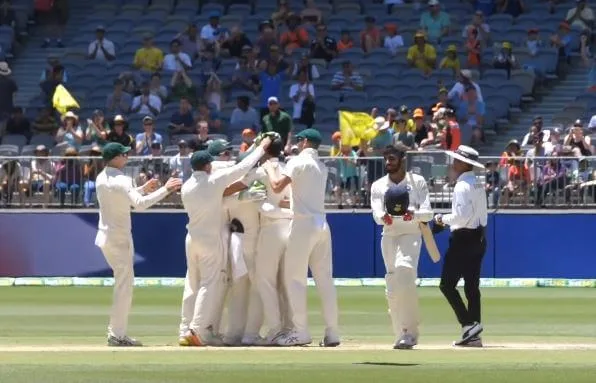The Perth pitch has always been known for being the fastest pitch in the world. It’s always been a treat for the pacers. But that pitch belonged to the WACA stadium. The second Test between India and Australia, which was won by the hosts, witnessed a new stadium in the city of Perth.
It was the first time that the new Optus Stadium hosted a Test match. There was a build up around the Perth pitch whether it would live up to the expectations of the WACA or not. The Optus stadium did provide a good bounce to the seamers. However, there were inconsistencies. A lot of balls kept low while others crept up from length.
Two contrasting natures of the Perth pitch can be understood from two different deliveries in the game. While Pat Cummins was castled by Jasprit Bumrah, the ball kept pretty low from the back of a length. On the other hand, Aaron Finch got hit on the finger and had to retire after a delivery bounced viciously from a good length.
ICC gave an average rating to the Perth pitch
There were several occasions when the deck misbehaved. Even though the game went into the last day, batting wasn’t an easy job out there. There was only one centurion in the game – Virat Kohli. Batsmen were made to work hard for every run.
The International Cricket Council (ICC) had introduced a rating system for the pitches around the world. It had the motive to improve the quality of the pitches and to have a fair contest between bat and ball. The Perth pitch earned an average rating, which is the lowest passing mark.
There are 5 different ratings a pitch can obtain – very good, good, average, below average and poor. While the Perth pitch just about made it above the low rating, the Adelaide pitch for the first Test had earned a very good rating. There was a consistent bounce on offer and both the bowlers and batsmen had an equal opportunity.
Stay updated with all the cricketing action, follow Cricadium on Facebook, Twitter and Instagram





 Win Projections to be updated soon
Win Projections to be updated soon